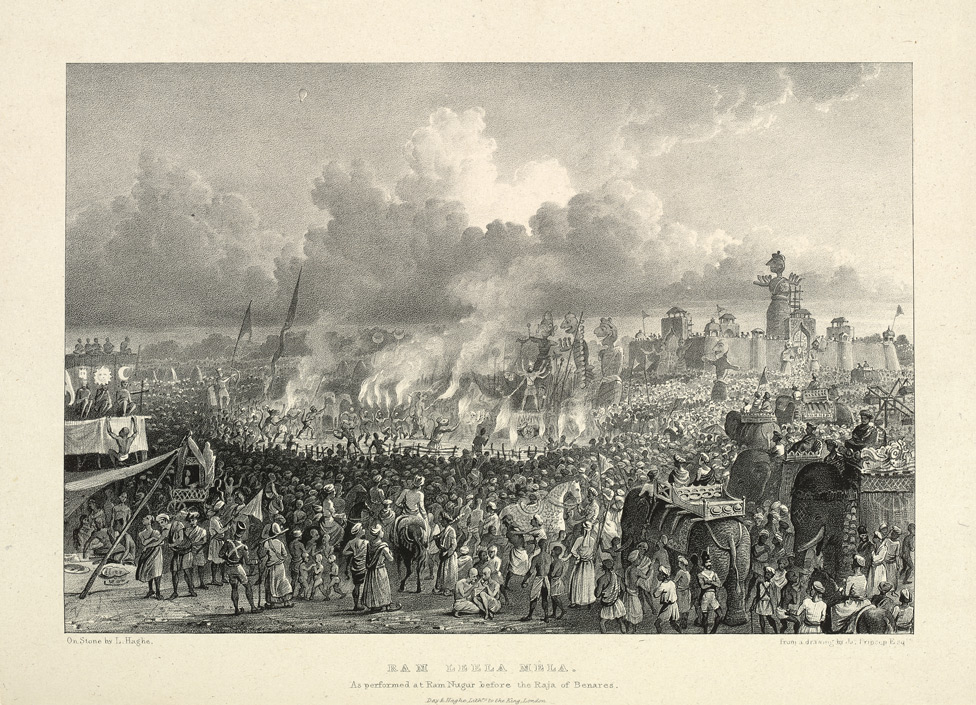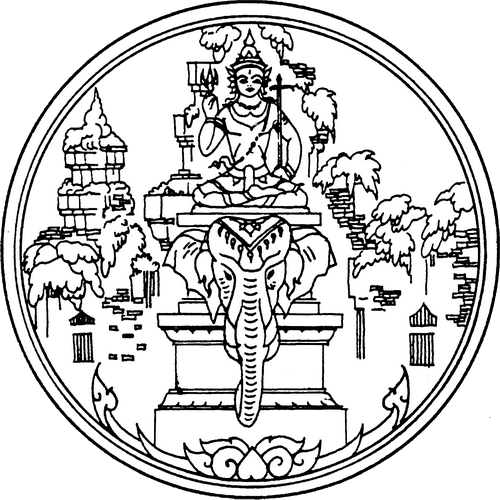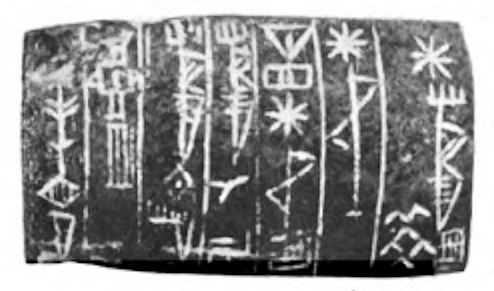|
Shakambhari
Shakambhari (Sanskrit: शाकम्भरी, International Alphabet of Sanskrit Transliteration, IAST: Śākambharī), also referred to as Shatakshi, is a goddess of nourishment. She is regarded to be an incarnation of Mahadevi, and identified with Durga in Hinduism. After the malevolent asura Durgasur, Durgamasura deprived the earth of nourishment by causing the sages to forget the Vedas, the goddess appeared to offer human beings and Deva (Hinduism), devas sufficient fruits and vegetables to restore their strength. Etymology The word ''śākaṃbharī'' means 'she who bears vegetables'. The word is derived from two words- ''śāka'' (Sanskrit: शाक) which means 'vegetable/vegan food' and ''bharī'' (Sanskrit: भरी) which means 'holder/bearer/wearer' which is ultimately derived from the root word ''bhṛ'' (Sanskrit: भृ) which means 'to bear/to wear/to nourish'. Legend After the asura Durgasur, Durgamasura sought to plunge the earth in drought and sca ... [...More Info...] [...Related Items...] OR: [Wikipedia] [Google] [Baidu] |
Navaratri
Navaratri () is an annual Hindu festival observed in honor of the goddess Durga, an aspect of Adi Parashakti, the supreme goddess. It spans over nine nights, first in the month of Chaitra (March/April of the Gregorian calendar), and again in the month of Ashvin (September–October). It is observed for different reasons and celebrated differently in various parts of the Hindu Indian cultural sphere. Theoretically, there are four seasonal ''Navaratris''. However, in practice, it is the post-monsoon autumn festival called Sharada Navaratri. There are 2 Gupta Navaratris or "Secret Navaratris" as well, one starting on the Shukla Paksha Pratipada of the Magha Month (Magha Gupta Navaratri) and another starting in the Shukla Paksha Pratipada of Ashadha Month. Etymology and nomenclature The word ''Navarātram'' means "a period of nine nights" in Sanskrit, ''nava'' meaning "nine" and ''ratri'' meaning "night". Dates and celebrations In the eastern and northeastern states of ... [...More Info...] [...Related Items...] OR: [Wikipedia] [Google] [Baidu] |
Shakambari Mata
Sambhar (officially known as Sambhar Lake Town) is a town and a municipality in Jaipur district in the Indian state of Rajasthan. It is surrounded by the Sambhar Salt Lake. Sambhar is approximately 70 km from Jaipur ( NH-8, RJ SH 57) and 99 km from Ajmer. Description Sambhar is known for the Sambhar Salt Lake, which is the largest inland salt lake in India. It derives its name from Shakambhari Devi, Goddess of the Chauhan clan, whose 2500-year-old temple is located 28 km from the town. The Indian epic Mahabharata and Puranas mentions Sambhar Lake as a part of the kingdom of the demon king Vrishparva, as the place where his priest Shukra Charya lived, and as the place where the wedding between his daughter, Devayani, and King Yayati took place. A temple near the lake is dedicated to Devayani with a pond in it. Mariam-uz-Zamani, daughter of Raja Bharmal of Amber, was married to Akbar on February 6, 1562, at Sambhar. Sambhar Lake has an archeological site ... [...More Info...] [...Related Items...] OR: [Wikipedia] [Google] [Baidu] |
Forms Of Lakshmi
Form is the shape, visual appearance, or configuration of an object. In a wider sense, the form is the way something happens. Form may also refer to: *Form (document), a document (printed or electronic) with spaces in which to write or enter data *Form (architecture), a combination of external appearance, internal structure, and the unity of the design *Form (education), a class, set, or group of students *Form (religion), an academic term for prescriptions or norms on religious practice *Form, a shallow depression or flattened nest of grass used by a hare *Form, or rap sheet, slang for a criminal record People * Andrew Form, American film producer * Fluent Form, Australian rapper and hip hop musician Arts, entertainment, and media * Form (arts organisation), a Western Australian arts organisation * Form (visual art), a three-dimensional geometrical figure; one of the seven elements of art *Poetic form, a set of structural rules and patterns to which a poem may adhere *Musi ... [...More Info...] [...Related Items...] OR: [Wikipedia] [Google] [Baidu] |
Hindu Goddesses
Hindu deities are the gods and goddesses in Hinduism. Deities in Hinduism are as diverse as its traditions, and a Hindu can choose to be polytheistic, pantheistic, monotheistic, monistic, even agnostic, atheistic, or humanist. Julius J. Lipner (2009), Hindus: Their Religious Beliefs and Practices, 2nd edition, Routledge, , p. 8; Quote: "(...) one need not be religious in the minimal sense described to be accepted as a Hindu by Hindus, or describe oneself perfectly validly as Hindu. One may be polytheistic or monotheistic, monistic or pantheistic, even an agnostic, humanist or atheist, and still be considered a Hindu." The terms and epithets for deities within the diverse traditions of Hinduism vary, and include Deva, Devi, Ishvara, Ishvari, Bhagavān and Bhagavati. The deities of Hinduism have evolved from the Vedic era (2nd millennium BCE) through the medieval era (1st millennium CE), regionally within Nepal, Pakistan, India and in Southeast Asia, and across Hinduism's d ... [...More Info...] [...Related Items...] OR: [Wikipedia] [Google] [Baidu] |
Demeter
In ancient Greek religion and Greek mythology, mythology, Demeter (; Attic Greek, Attic: ''Dēmḗtēr'' ; Doric Greek, Doric: ''Dāmā́tēr'') is the Twelve Olympians, Olympian goddess of the harvest and agriculture, presiding over crops, grains, food, and the fertility (soil), fertility of the earth. Although Demeter is mostly known as a grain goddess, she also appeared as a goddess of health, birth, and marriage, and had connections to the Greek underworld, Underworld. She is also called Deo ( ''Dēṓ''). In Greek tradition, Demeter is the second child of the Titans Rhea (mythology), Rhea and Cronus, and sister to Hestia, Hera, Hades, Poseidon, and Zeus. Like her other siblings except Zeus, she was swallowed by her father as an infant and rescued by Zeus. Through Zeus, she became the mother of Persephone, a fertility goddess and Dying-and-rising deity, resurrection deity. One of the most notable ''Homeric Hymns'', the ''Homeric Hymn to Demeter'', tells the story of ... [...More Info...] [...Related Items...] OR: [Wikipedia] [Google] [Baidu] |
Ceres (mythology)
In ancient Roman religion, Ceres ( , ) was a goddess of agriculture, grain crops, fertility and motherly relationships.Room, Adrian, ''Who's Who in Classical Mythology'', p. 89-90. NTC Publishing 1990. . She was originally the central deity in Rome's so-called plebeian or Aventine Triad, then was paired with her daughter Proserpina in what Romans described as "the Greek rites of Ceres". Her seven-day April festival of Cerealia included the popular '' Ludi Ceriales'' (Ceres' games). She was also honoured in the May lustration (''lustratio'') of the fields at the Ambarvalia festival: at harvesttime: and during Roman marriages and funeral rites. She is usually depicted as a mature woman. Ceres is the only one of Rome's many agricultural deities to be listed among the Dii Consentes, Rome's equivalent to the Twelve Olympians of Greek mythology. The Romans saw her as the counterpart of the Greek goddess Demeter,''Larousse Desk Reference Encyclopedia'', The Book People, Haydock, ... [...More Info...] [...Related Items...] OR: [Wikipedia] [Google] [Baidu] |
Inanna
Inanna is the List of Mesopotamian deities, ancient Mesopotamian goddess of war, love, and fertility. She is also associated with political power, divine law, sensuality, and procreation. Originally worshipped in Sumer, she was known by the Akkadian Empire, Akkadians, Babylonian religion, Babylonians, and Assyrians as Ishtar. Her primary title is Queen of Heaven (antiquity), "the Queen of Heaven". She was the patron goddess of the Eanna temple at the city of Uruk, her early main religious center. In archaic Uruk, she was worshipped in three forms: morning Inanna (Inana-UD/hud), evening Inanna (Inanna sig), and princely Inanna (Inanna NUN), the former two reflecting the phases of her associated planet Venus. Her most prominent symbols include the Lion of Babylon, lion and the Star of Ishtar, eight-pointed star. Her husband is the god Dumuzid (later known as Tammuz), and her (attendant) is the goddess Ninshubur, later conflated with the male deities Ilabrat and Papsukkal. Inanna ... [...More Info...] [...Related Items...] OR: [Wikipedia] [Google] [Baidu] |
Annapurna (goddess)
Annapurna, Annapurneshwari, Annada or Annapoorna (Sanskrit: अन्नपूर्णा, IAST: Annapūrṇā, lit. ''filled with or possessed of food'') is a manifestation of Parvati and is known as the Hindu goddess of food and feeding. Worship and offering of food are highly praised in Hinduism, and therefore, the goddess Annapurna is regarded as a popular deity. She is a manifestation of the goddess Parvati, the paredra of Shiva, and is eulogized in the '' Annada Mangal'', a narrative poem in Bengali by Bharatchandra Ray. The ''Annapurna Sahasranam'' is dedicated to the goddess and praises her one thousand names, while the ''Annapurna Shatanama Stotram'' is dedicated to her 108 names. A few temples exist that are dedicated to her, some of the most prominent being the Annapoorneshwari Temple established by Agastya at Horanadu and Annapurna Devi Mandir in Varanasi. Since Akshaya Tritiya is considered to be the birthdate of Annapurna, the day is believed to be very aus ... [...More Info...] [...Related Items...] OR: [Wikipedia] [Google] [Baidu] |
Sambhar Lake Town
Sambhar (officially known as Sambhar Lake Town) is a town and a municipality in Jaipur district in the Indian state of Rajasthan. It is surrounded by the Sambhar Salt Lake. Sambhar is approximately 70 km from Jaipur ( NH-8, RJ SH 57) and 99 km from Ajmer. Description Sambhar is known for the Sambhar Salt Lake, which is the largest inland salt lake in India. It derives its name from Shakambhari Devi, Goddess of the Chauhan clan, whose 2500-year-old temple is located 28 km from the town. The Indian epic Mahabharata and Puranas mentions Sambhar Lake as a part of the kingdom of the demon king Vrishparva, as the place where his priest Shukra Charya lived, and as the place where the wedding between his daughter, Devayani, and King Yayati took place. A temple near the lake is dedicated to Devayani with a pond in it. Mariam-uz-Zamani, daughter of Raja Bharmal of Amber, was married to Akbar on February 6, 1562, at Sambhar. Sambhar Lake has an archeological si ... [...More Info...] [...Related Items...] OR: [Wikipedia] [Google] [Baidu] |
Vaishno Devi
Vaishno Devi (also known as Mata Rani, Trikuta, Ambe and Vaishnavi) is a manifestation of the Hindu mother goddess. She is worshipped as a combined avatar of the goddesses Mahakali, Mahalakshmi, and Mahasarasvati. Origin Purāṇa In the Varāha Purāṇa's Triśakti Māhātmya, she originated from the goddess Trikalā and slayed the asura Mahiṣāsura on Śataśṛṅga Parvata where the current Trikūṭa Dhāma of Vaiṣṇōdēvī is situated. Pāñcarātra The Lakṣmīnārāyaṇa Saṃhitā's Kṛtayuga Santāna and Dvāparayuga Santāna calls her "Māṇikī", the Śakti of Kalki, as she resides on Māṇika Parvata. Mythology It is said that when Bhairavnath ran after Vaishno Devi to catch her, she approached a cave in the hills and summoned Hanuman. She told him, "I would do penance in this cave for nine months, till then you should not allow Bhairavnath to enter the cave." Hanuman obeyed her orders. Today the cave is known as Ardha Kunwari. Temple ... [...More Info...] [...Related Items...] OR: [Wikipedia] [Google] [Baidu] |
Saharanpur
Saharanpur is a city and a Municipal corporation (India), municipal corporation in Uttar Pradesh, India. It is also the public administration, administrative headquarters of Saharanpur district. Saharanpur city's name was given after the Saint Shah Haroon Chishti. Saharanpur is declared as one among the 100 Smart Cities by the Ministry of Housing and Urban Affairs as a part of Smart Cities Mission of the Government of India. Historical Medieval period During the reign of Iltutmish (r 1211–1236), the region became a part of the Delhi Sultanate. At that time, most of the area remained covered with forests and marshlands, through which the Paondhoi, Dhamola, and Ganda Nala rivers flowed. The climate was humid and malaria outbreaks were common. Muhammad bin Tughluq, the Sultan of Delhi (1325–1351), undertook a campaign in the northern ''doab'' to crush the rebellion of the Siwalik Hills, Shivalik kings in 1340, when according to local tradition he learned of the presence ... [...More Info...] [...Related Items...] OR: [Wikipedia] [Google] [Baidu] |
Lakshmi Tantra
The Lakshmi Tantra () is one of the Pancharatra texts that is dedicated to the goddess Lakshmi and Narayana (Vishnu) in Hinduism. It forms a part of the Agamas. The Lakshmi Tantra is devoted to the worship of the goddess Lakshmi (the shakti of Vishnu-Narayana), although it also glorifies all women in general. Date The text was composed sometime between the ninth and twelfth centuries. Contents The Lakshmi Tantra text includes information about Pancharatra philosophy, cosmogony and mantra sastra. The iconography for Lakshmi-Narayana and Vishnu’s Vyūhas is also discussed. The book does not include information about ritualistic worship, temple architecture and worship. The text may also be categorised as Vaishnava, since it glorifies Lakshmi-Narayana as supreme: The Lakshmi Tantra is shown to have distinct similarities with the Pratik Rahasyam of Devi Mahatmya, showing an assimilation of Vaishnavas with Shakta-lore, which is extremely rare. The episode describing how th ... [...More Info...] [...Related Items...] OR: [Wikipedia] [Google] [Baidu] |









